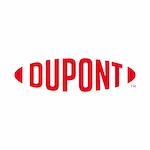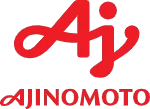Russia Ammonium Phosphate Market Revenue, Production, Consumption, Average Price, Import vs Export

- Published 2025
- No of Pages: 120+
- 20% Customization available
Ammonium Phosphate Market in Russia: An Overview
Russia, as a significant player in the global fertilizer market, has witnessed steady growth in the ammonium phosphate industry. Known for its extensive agricultural activities and rich mineral reserves, the demand for ammonium phosphate—a key ingredient in fertilizers—continues to expand. This article delves into the dynamics of Russia’s ammonium phosphate market, analyzing its size, production trends, demand drivers, segmentation, and future growth prospects.
Market Size and Production Trends
The ammonium phosphate market in Russia is primarily driven by its robust agricultural sector. As of recent estimates, the market size is substantial, with a production capacity exceeding millions of tons annually. Russia’s strategic position as one of the leading exporters of fertilizers underlines its critical role in global supply chains. Domestic manufacturers dominate the market, benefiting from abundant raw material availability and advanced production technologies.
Producers such as PhosAgro and EuroChem are prominent players in the Russian ammonium phosphate market, leveraging economies of scale to compete globally. Their investments in state-of-the-art facilities ensure consistent supply and high-quality products, enhancing market reliability.
Demand Drivers and Growth Factors
The increasing global emphasis on sustainable agriculture and food security has fueled the demand for ammonium phosphate in Russia. Key drivers include:
- Growing Agricultural Activities: Russia’s vast arable land and diverse crop cultivation necessitate efficient fertilizers to improve yield.
- Export Opportunities: Rising international demand for high-quality fertilizers, especially in Asia-Pacific and Latin America, supports the growth of Russian ammonium phosphate exports.
- Government Policies: Supportive policies and subsidies for agricultural development have incentivized the use of fertilizers, further driving demand.
Additionally, the integration of ammonium phosphate in industrial applications, such as fireproofing materials, has contributed to the diversification of demand.
Market Segmentation
The Russian ammonium phosphate market can be segmented based on:
- Product Type:
- Monoammonium Phosphate (MAP)
- Diammonium Phosphate (DAP)
- Application:
- Agricultural Fertilizers
- Industrial Uses
- Distribution Channel:
- Direct Sales
- Distributors and Wholesalers
- Geography:
- Central Russia
- Eastern Russia
- Western Russia
Among these, product type segmentation holds significant importance, with MAP and DAP being the most widely used due to their high nutrient content and suitability for a variety of crops.
Opportunities and Challenges
The ammonium phosphate market in Russia offers numerous opportunities, including:
- Technological Advancements: Adoption of precision agriculture and modern fertilizer formulations.
- Export Growth: Expanding export markets driven by competitive pricing and quality assurance.
- Sustainability Trends: Increasing demand for eco-friendly and efficient fertilizers.
However, challenges persist, such as fluctuating raw material prices and regulatory pressures regarding environmental sustainability. Manufacturers must navigate these hurdles to sustain growth and competitiveness.
Key Market Segmentations and Their Impact
- Monoammonium Phosphate (MAP): Dominates the market due to its balanced nitrogen and phosphorus content, ideal for soil enrichment.
- Agricultural Fertilizers: The largest application segment, driven by the growing need to enhance agricultural productivity.
- Geographical Focus: Central Russia leads in production and consumption, benefiting from proximity to raw materials and well-developed infrastructure.
The industrial applications segment, while smaller, presents untapped growth potential, particularly in niche markets.
Future Outlook and Forecast
The Russian ammonium phosphate market is poised for steady growth, with a forecasted CAGR of around 5-7% over the next decade. Factors like increased agricultural investments, export-oriented production, and innovation in fertilizer technology will shape the market’s trajectory. Manufacturers are likely to prioritize sustainability initiatives and expand into emerging markets to capitalize on global demand.
Conclusion
The ammonium phosphate market in Russia represents a thriving sector with vast opportunities for manufacturers, marketers, and investors. By leveraging the country’s resource advantages, technological capabilities, and strategic export positioning, stakeholders can unlock significant business potential. With continued emphasis on sustainability and efficiency, the market is set to play a pivotal role in both domestic and global agricultural advancements.
Table of Contents: Ammonium Phosphate Market
- Introduction to the Ammonium Phosphate Market
1.1 Overview and Importance of Ammonium Phosphate
1.2 Scope of the Global and Regional Ammonium Phosphate Market
1.3 Key Applications of Ammonium Phosphate in Industry - Ammonium Phosphate Market Segment Analysis
2.1 Market Segmentation by Product Type (Monoammonium Phosphate (MAP), Diammonium Phosphate (DAP))
2.2 Market Segmentation by Application (Fertilizers, Fire Retardants, Food Additives, Industrial Chemicals, etc.)
2.3 Regional Segmentation of the Ammonium Phosphate Market - Ammonium Phosphate Market Revenue Estimates and Forecasts (2019–2030)
3.1 Market Size and Revenue Trends (Historical and Projected)
3.2 Revenue Contribution by Key Applications - Production Analysis: Ammonium Phosphate Market (2019–2030)
4.1 Ammonium Phosphate Production Capacity Trends
4.2 Regional Production Analysis
4.3 Challenges in Meeting Market Demand - Market Competition and Key Players
5.1 Overview of Leading Ammonium Phosphate Manufacturers
5.2 Revenue Market Share of Key Players (2019–2023)
5.3 Market Strategies of Leading Producers - Production by Manufacturers
6.1 Production Capacity by Major Companies
6.2 Contribution of Domestic vs. International Players - Revenue Market Share by Manufacturers (2019–2023)
7.1 Detailed Analysis of Revenue Distribution
7.2 Gross Margins and Pricing Strategies - Production Analysis by Raw Materials and Technology
8.1 Usage of Ammonia and Phosphoric Acid in Production
8.2 Advances in Ammonium Phosphate Production Technology
8.3 Production Cost Breakdown - Ammonium Phosphate Market: Export and Import Trends
9.1 Export Volume and Revenue (2019–2024)
9.2 Import Dependency and Trends
9.3 Trade Balance Analysis - Ammonium Phosphate Market Consumption Trends
10.1 Consumption by Industry Sectors (Agriculture, Food, Industrial, etc.)
10.2 Consumption by Region
10.3 Market Share by End-Use Applications - Production vs. Export Analysis (2019–2024)
11.1 Domestic Production Trends vs. Export Volume
11.2 Key Export Destinations - Consumption vs. Import Analysis
12.1 Regional Consumption Trends in Comparison to Imports
12.2 Impact of Imports on Domestic Market Prices - Manufacturing Cost Analysis for Ammonium Phosphate
13.1 Breakdown of Manufacturing Costs
13.2 Key Raw Materials and Pricing
13.3 Supply Chain Analysis - Industrial Chain and Raw Materials Analysis
14.1 Overview of Ammonium Phosphate Supply Chain
14.2 Key Suppliers of Raw Materials
14.3 Industrial Integration and Challenges - Marketing Channels and Distribution
15.1 Key Distributors of Ammonium Phosphate
15.2 Marketing and Sales Strategies
15.3 Customer Profiles and Industry Demand - Business Opportunities in the Ammonium Phosphate Market
16.1 Investment Opportunities in Production Expansion
16.2 Joint Ventures and Collaborations with Global Players
16.3 Opportunities in Export Markets - Recent Trends in the Ammonium Phosphate Market
17.1 Developments in Domestic Production Capacities
17.2 Policy Reforms and Their Impact on Market Growth
17.3 Innovations in Sustainable Production Techniques - Ammonium Phosphate Market Forecast (2024–2030)
18.1 Production Volume and Revenue Forecast
18.2 Consumption Trends and Industry Projections
18.3 Export and Import Forecast - Conclusion
19.1 Key Findings of the Ammonium Phosphate Market
19.2 Future Outlook for the Industry
“Every Organization is different and so are their requirements”- Datavagyanik
Companies We Work With






Do You Want To Boost Your Business?
drop us a line and keep in touch

